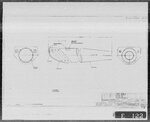fredleander
Airman
- 27
- Apr 24, 2014
The gun chargers where not directly connected to the landing gear in any way. They had there own feed from the hydraulic system and the lines went directly from the chargers to the guns. You could have a leak and lose fluid in the system but that would not cause the gear to collapse. The gear on a P-40 will stay down with no fluid in the system.
The technical order to remove them came out in October 28, 1942.
Brandon
I suppose you mean 1941...
Fred


